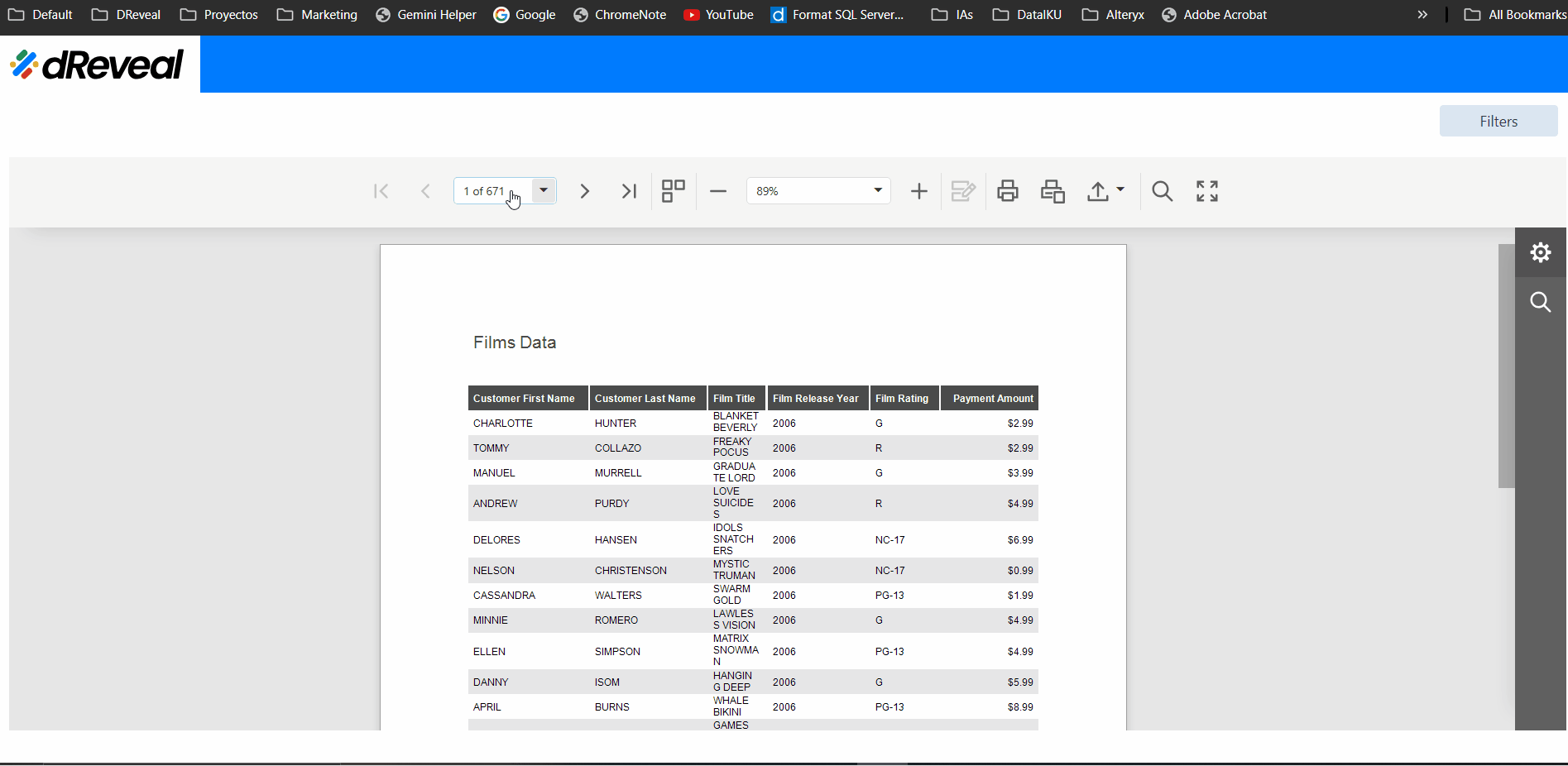Filters
Filters allow you to customize Document-type reports to retrieve only the information you need. This functionality is especially useful for refining data and generating more specific and relevant reports. The different types of filters are detailed below:
| Filter Type | Description |
|---|---|
| Default Values | Default values that are automatically applied to the filter. This helps set an initial option without the user having to select anything. |
| Boolean | A filter that allows you to select between two options: true or false. |
| Simple Selection | A filter that allows you to select a single option from a list. Useful when only one choice is needed from several available options. |
| Multiple Selection | A filter that allows you to select multiple options from a list. It enables the user to select more than one option, facilitating broader analysis. |
| Mandatory | A mandatory filter that requires a selection before proceeding. The user must make a selection for the report to be executed. |
| Cascading | A dependent filter that adjusts based on the selection of another filter. For example, the option selected in one filter may affect the available options in another filter. |
| Tree | A filter based on a hierarchical structure of options. It allows users to navigate through categories or subcategories. |
| Date | A filter that allows you to select a date or a date range. Ideal for filtering by specific time periods. This filter has the following options: On, After, Before, Between, Is Null, Not between, Is not null, This (Days, Weeks, Months, Quarters, Years), Next (Days, Weeks, Months, Quarters, Years), Last (Days, Weeks, Months, Quarters, Years),Today |
| Numeric | A filter based on numerical values, allowing comparisons or ranges. Useful for filtering numerical data within a specific range. This filter has the following options: Equal, Less than, Less than or equal, Great than, Great than or equal, Between, Is null, Not equal, Not between, Is not null |
By clicking the "Clear" button, all selected filter criteria are removed. To apply this action, click the "Apply" button so that the report reloads with the complete dataset, without any restrictions. This functionality is useful when users want to start over with new filter selections or simply view all the data without any applied filters. It ensures a refreshed view of the report, providing an easy way to reset the filtering options.
How to Apply Filters
To set filters, click the "Filters" button at the top right of your report. A popup window will then appear on the right side of the report. Select the desired filters and click the Apply button to load and display the relevant information.

